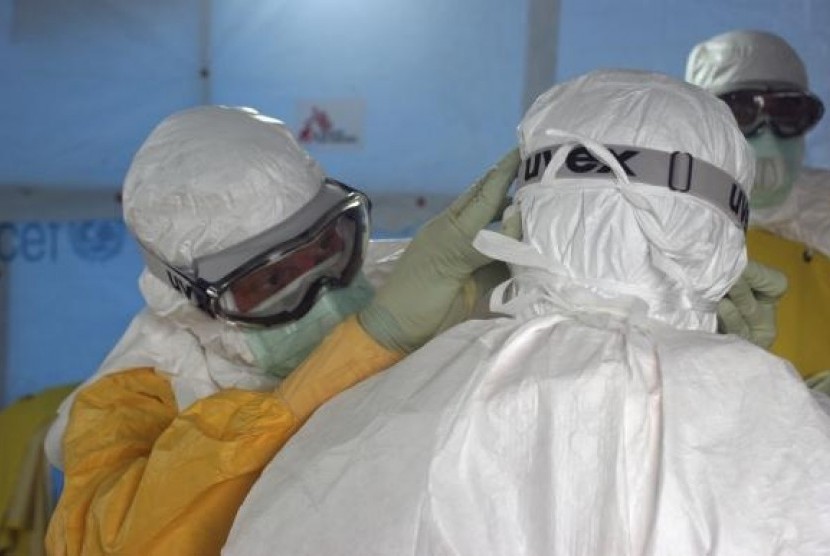REPUBLIKA.CO.ID, GENEVA - The Ebola outbreak in West Africa could infect 20,000 people as soon as early November unless rigorous infection control measures are implemented, and might "rumble on" for years in a holding pattern, researchers said on Tuesday.
In an article in the New England Journal of Medicine, experts from the World Health Organization and Imperial College said that infections will continue climbing exponentially unless patients are isolated, contacts traced and communities enlisted.
The WHO, in an initial roadmap issued on Aug 28, predicted that the virus could strike 20,000 people within the next nine months. The current death toll is at least 2,811 out of 5,864 cases, the UN agency says.
The latest study, marking six months from March 23, when the WHO says it was informed of the Ebola outbreak in southeastern Guinea, reflects projections based on the data from a third wave of the virus in Guinea, Sierra Leone and worst-hit Liberia.
"With exponential growth, you'll see that the case numbers per week go up so that by the second of November, over these three countries our best estimate is over 20,000 cases, confirmed and suspected cases," Dr. Christopher Dye, the WHO director of strategy, and co-author of article, told a briefing.
Nearly 10,000 of those would be in Liberia, 5,000 in Sierra Leone and nearly 6,000 in Guinea, he said. But those numbers would only come about with no enhanced infection control.
"Everyone is certainly working very hard to make sure this is a not the reality that we will be seeing," Dye said. "I will be surprised if we hit 20,000 by then," he later added.
UN Secretary-General Ban Ki-moon said last week that under a 1 billion USD plan, he will create a special mission to combat the disease and deployed staff to the region.
"If control is completely successful in the way that we know it can be, then Ebola will disappear from the human population of West Africa and probably return to its animal reservoir," Dye said, noting that fruit bats were probably the reservoir.
But if control efforts are only partly successful, Ebola viral disease in the human population could become "a permanent feature of life in West Africa", Dye said.
"The alternative possibility that we're talking about is that the epidemic simply rumbles on as it has for the last few months for the next few years, on the order of years, rather than months.
"Under those circumstances, the fear is that Ebola will be more or less a permanent feature of the human population. Of course it could be extinguished later on."
In the three hardest-hit countries there was a "mixed pattern", Dye said.
"We see for example in the border areas of Guinea, Sierra Leone and Liberia, some areas where there has been no increase in cases for some weeks now. That's true in Sierra Leone, it's true in Lofa in northern Liberia, and it's true in one of the provinces of Guinea.
"So the question that arises is whether we're actually seeing the beginning of a stationary pattern in this epidemic," he said.
In two badly affected districts of Sierra Leone, Kenema and Kailahun, close to border areas with Guinea and Liberia, there has been a stationary pattern, he said.


